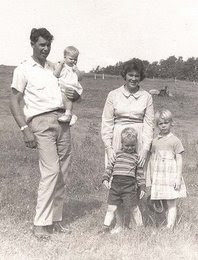Click on the links under the images.
From School Library JournalGrade 1-4 - An exciting story about a girl and her father who escape slavery with help from the coded symbols on a quilt. Shortly after Hannah's sister is sold to another plantation, Mama dies, but not before teaching Hannah how to sew, whispering, "…this quilt will show you everything you need to know to run to freedom." Their journey leads them along the Underground Railroad, from their Georgia plantation to a hiding place beneath a church, through pirate tunnels, and eventually to the home of a Quaker family. Finally, they cross Lake Erie into Canada, and the narrative ends on a hopeful note as Hannah makes a new quilt with an empty square for her sister, praying that someday they'll be together again, and free. The first-person narrative flows smoothly and lends immediacy to the dramatic events. The vivid oil paintings are skillfully done, with the characters' expressive faces reflecting their fear and courage, and angular lines echoing the quilt squares. An afterword gives some historical background. Overall, this works well as a story and also as a lesson in African-American history. - Lauralyn Persson, Wilmette Public Library, IL
Copyright © Reed Business Information, a division of Reed Elsevier Inc. All rights reserved. --This text refers to the Hardcover edition.
From Publishers Weekly
Dramatic oil paintings and compelling verse-like prose combine to portray the harsh yet hopeful experience of travel along the Underground Railroad. Hopkinson and Ransome revisit the theme of their first collaboration, Sweet Clara and the Freedom Quilt. This time readers journey the precarious trail to freedom with a young runaway as she escapes to Canada via clandestine routes and dangerous nighttime treks. The intense opening spread features three panels showing her nameless family running for their lives by the light of the full moon, some shoeless or with only rags on their feet. (Subsequent pages show snarling dogs and overseers in hot pursuit.) The story comes to a formidable climax when they're almost discovered hiding in the back of a wagon. Hopkinson names each segment of the journey ("Running," "Waiting," "Hiding") and her narrative conveys the emotional and physical hardships of the trip ("Fear is so real, it lies here beside me"). The author connects the metaphorical protective quilt of night with folkloric elements (legend has it that quilts with blue center squares indicated safe houses on the Underground Railroad). Ransome fills in the characterizations with portraits that convey a strong familial connection and the kindness of the conductors along the way. This suspenseful story successfully introduces and sheds light on a pivotal chapter in America's history for youngest readers. Ages 5-10.
Copyright 2001 Cahners Business Information, Inc.
MOTHER AND DAUGHTER, grandmother and granddaughter, aunt and niece, friend and friend. For a hundred years, generations of women from Gee’s Bend have quilted together, sharing stories, trading recipes, singing hymns—all the while stitchin’ and pullin’ thread through cloth. Every day Baby Girl listens, watches, and waits, until she’s called to sit at the quilting frame. Piece by piece, she puzzles her quilt together—telling not just her story, but the story of her family, the story of Gee’s Bend, and the story of her ancestors’ struggle for freedom.
From School Library Journal
Kindergarten-Grade 3-- Clara, a young slave, works as a seamstress and dreams of freedom. Overhearing drovers talk of escaping North enables her to make a patchwork map of the area. When she escapes, she leaves the quilt behind to guide others. Based on a true event, this is a well-written picture book. Ransome's oil paintings, however, are perhaps too smooth and rich for the story they tell. The world depicted is too bright, open, and clean. For example, in the first scene Clara has been put to work in the cotton fields. Supposedly too frail to last long at such work, she is pictured as a slim, serious, yet sturdy girl. The bright yellow sky and the charming smile of the boy with her belie the realities of the back-breaking work. In another scene, young Jack, who has been brought back the day before from running away, looks solemn, but not distressed, and is wearing what appears to be a freshly ironed white shirt. Again, the image distances viewers from the realities of the situation. Clara's escape to Canada, too, is marvelously easy, although she does say, "But not all are as lucky as we were, and most never can come." It is not easy to present the horrors of slavery to young children; thus, even though Ransome's illustrations, and to some extent the text, err on the side of caution, this is an inspiring story worth inclusion in most collections. --Karen James, Louisville Free Public Library, KY
Copyright 1993 Reed Business Information, Inc. --This text refers to the Hardcover edition.
Amazon.com Review
In Cassie's Word Quilt, a young African American girl takes early readers on a remarkable tour of her 1930s-era Harlem home, school, and neighborhood. The tour serves as a vocabulary jaunt, as well. Dozens of objects are clearly labeled; the youngest viewers of this big lap book can point to familiar images as older readers read the captions: "doll," "quilt," "father," "subway," "jump rope." Ringgold's vibrant art captures the excitement of urban life in an era gone by. Gorgeous spreads feature a richly textured quilt motif, with illustrations picking up on the patterns in the squares of fabric bordering the pages. Seldom have we seen a word identification book as artful as Cassie's Word Quilt. Ringgold's other titles include Caldecott Honor Book Tar Beach (on which Cassie's Word Quilt is based), and companion volumes Counting to Tar Beach and Cassie's Colorful Day. (Baby to Preschool) --Emilie Coulter --This text refers to the Hardcover edition.
Product Description
A small African-American girl is overjoyed with the new patchwork quilt her parents have made. As she sleeps, it comes alive, turning into a fantastical dreamscape she must enter in order to find her beloved stuffed dog. An ALA Notable Children's Book. Full color.
Product Description
Martha Ann is twelve years old when Papa finally saves enough money to purchase her freedom from slavery. In 1830, the family leaves east Tennessee to begin a new life in Liberia. On market days, Martha Ann watches the British navy patrolling the Liberian coast to stop slave catchers from kidnapping her family and friends and forcing them back into slavery. Martha Ann decides to thank Queen Victoria in person for sending the navy. But first, she must determine how to make the 3,500-mile voyage to England, find a suitable gift for the Queen, and withstand the ridicule of family and friends who learn of her impossible dream. Martha Ann's Quilt for Queen Victoria is the true story of Martha Ann Ricks, an ex-slave who spent fifty years saving spare coins to fulfill her dream of meeting the Queen of England.
From Booklist
*Starred Review* Gr. 3-5. A Show Way is a quilt with secret meanings, and the image works as both history and haunting metaphor in this exquisite picture book. Based on Woodson's own history, the unforgettable story tells of African American women across generations, from slavery and the civil rights movement to the present. The cut-out jacket design is impressive, as is Talbott's mixed-media artwork inside, which extends Woodson's clear poetic narrative with beautiful collages that make use of big triangles, squares, and curves to emphasize portraits and landscapes and show connections and courage. The first double-page spread is of anguished separation when Soonie's great-grandmother is sold "without her ma or pa." Growing up on a plantation in South Carolina, Soonie learns from Big Mama about children "growing up and getting themselves free," and also how to sew quilts with signs that show the way to freedom. Time passes: Soonie's granddaughter, Georgiana, has twin girls who march for freedom in the 1960s. The final glorious spread shows Georgiana's granddaughter, Jacqueline Woodson, laughing at home with her own beloved daughter, Toshi Georgiana, whose picture is embedded in a quilt, connecting her with those who came before. A must for the classroom, this story will move many readers to explore their own family roots; link it to the Booklist interview with Woodson [BKL F 1 05], in which she talks about what she owes to those who came before her. Hazel Rochman
Copyright © American Library Association. All rights reserved






































No comments:
Post a Comment
May our hands bring beauty upon this Earth!